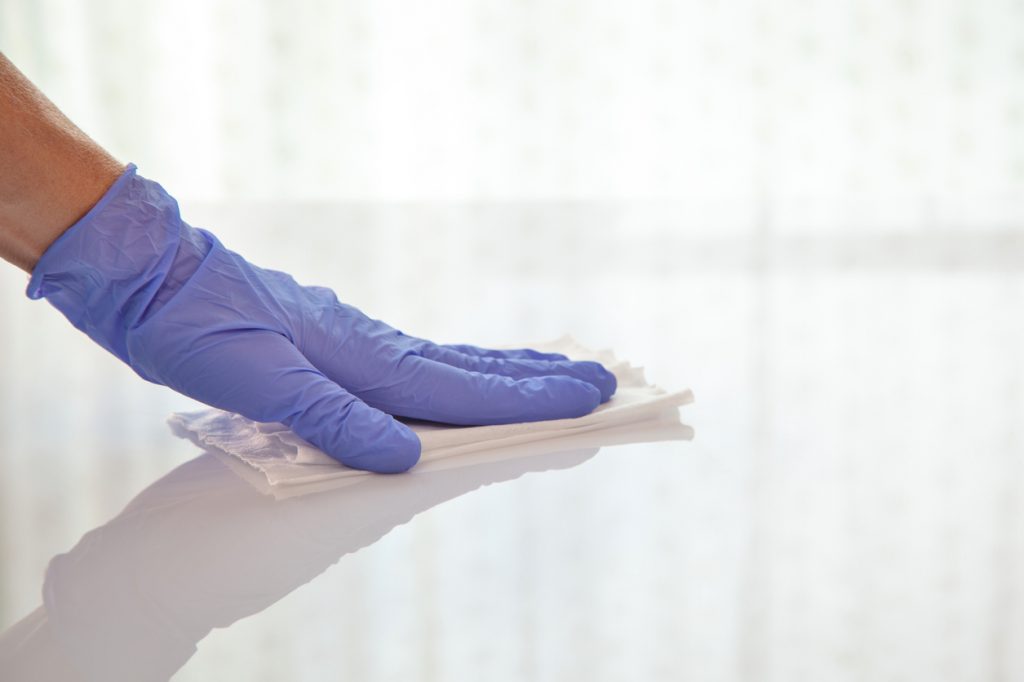Cleaning for Health: The Quest Floor Care Promise
Disclaimer: We’re About to Get Nerdy!
Over the past several months, the Quest Floor Care team has learned about the science side of floor cleaning and care. The conclusion: there are two different “reasons” to clean: you clean for appearance or you clean for health. As you might imagine, there are very different criteria associated with these reasons, one of which is that cleaning for health has objective metrics associated with it.
So, let’s talk about what these two things mean. Recently, we’ve asked a lot of clients how they define “clean.” One of the best answers we’ve gotten was:
“Would I sit there?”
This is definitely one way to look at it! But a visual analysis of any surface’s cleanliness is going to be somewhat subjective, right? Another person could look at the same surface and come to a different decision. Maybe one person would sit where another one wouldn’t.
That’s what cleaning for appearance is at its core. It’s cleaning something to the visual satisfaction and standards of any given person. In our experience, two people, say a college student checking off a box for their property owner versus a homeowner, may have very different standards of defining “clean.”

So, What Is Cleaning for Health?
First, we have to define “cleaning” in a clear and precise manner.
In a book titled, Protecting the Built Environment: Cleaning For Health, Dr. Michael Berry defined cleaning as:
That’s an awful lot of words, right? Coming across the book was a little bit like finding an ancient tome of deep magic at a yard sale. Yet this is an actual objective definition of cleaning! If we begin with that, then we can start to establish an objective and actionable framework for cleaning processes that can be documented and verified.
Objective Cleaning Metrics for Health
The next step is to establish benchmarks and metrics for the cleaning process. First, we must define how much soiling is present before the cleaning. And then we must determine where things stand post-cleaning.
After starting Quest Floor Care in 2012, owner Joseph Rogers read about a method of using ultraviolet lights to ensure hospital housekeeping staff were doing their job thoroughly.
The general principle is to augment the visual inspection of cleaning processes. While the ultraviolet light is a step in the right direction, it has been proven a better indicator of whether cleaning was attempted, rather than as an indicator of cleaning efficacy.
It has been determined that, even with an attempt to clean (and thereby disturbing the UV mark), that matter can still be left behind by the cleaning process that’s invisible to the naked eye.
How do we know this, you might ask? Are you ready to really get nerdy with us?
Let’s Talk About ATP
ATP is short for Adenosine TriPhosphate. ATP is present in all living biological material because it’s what the individual cells use to create energy.
You may find yourself thinking, “why does that matter?” The answer is because the presence of ATP is an indicator of biological material.
Whether it’s skin cells or any number of various bacteria, it is possible to objectively determine levels of ATP on any given surface! ATP testing has been used in food and beverage processing plants for a long time to test and ensure that a surface is legitimately clean. There are clear standards that say ATP levels have to be below a certain point for food to be processed on any given surface.
Quest Floor Care’s team are now experts with an ATP meter. While a surface surface can look clean, it’s possible for it to have ridiculously high levels of ATP. Now, we swab the surface before cleaning and record the number from the ATP test. Then, we clean the surface, and swab in the same place, recording the new number.
This data tells us two things. First, Quest Floor Care can determine a legitimate cleaning efficacy percentage, or how much of the matter (both visible and invisible) we were able to remove. Second, we can tell if our cleaning processes managed to get these surfaces as clean as is necessary to not just eat off of, but even prepare food safely on. Now that is cleaning for health, not just appearance.
Keep calm and science on, folks!
